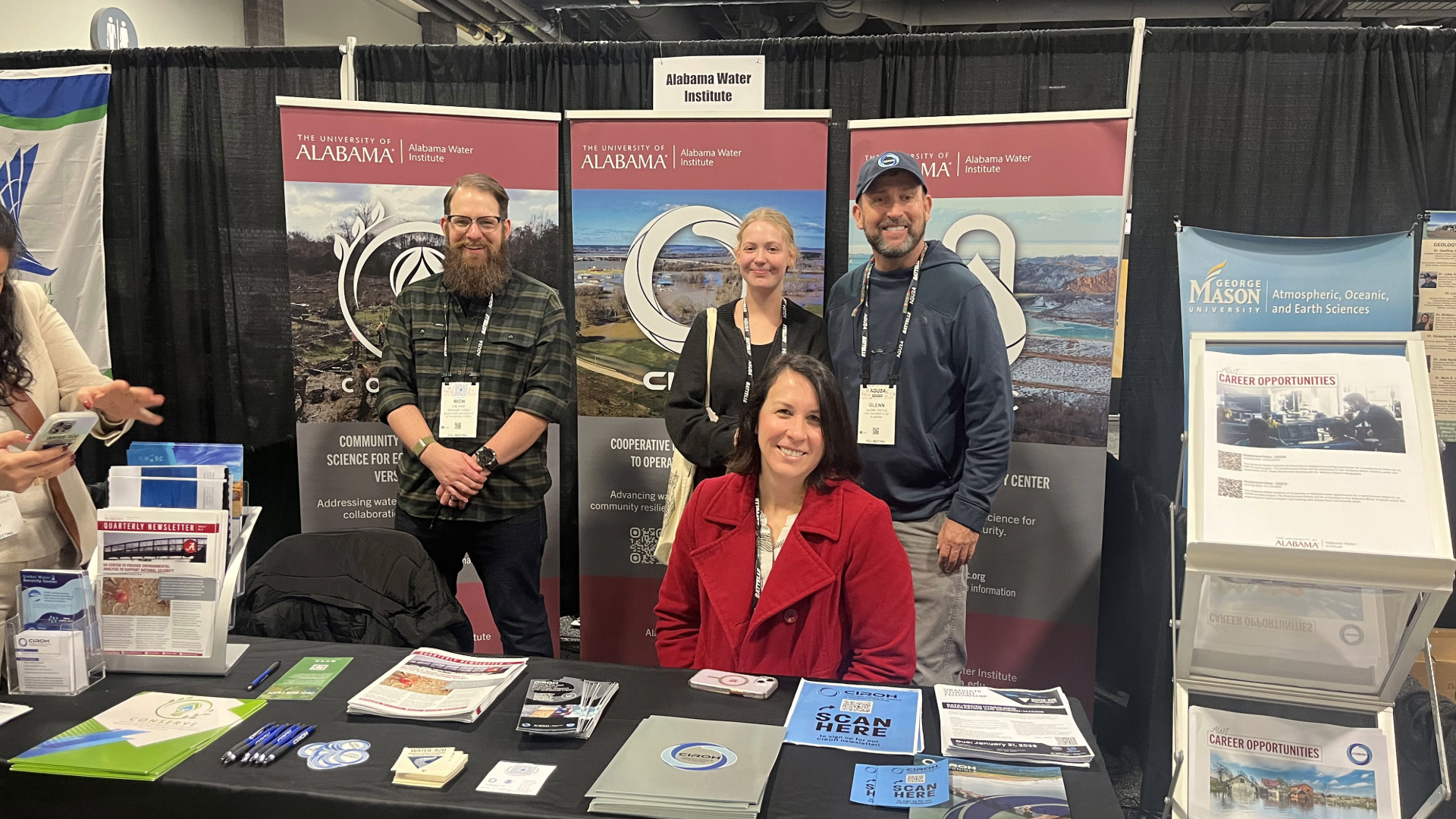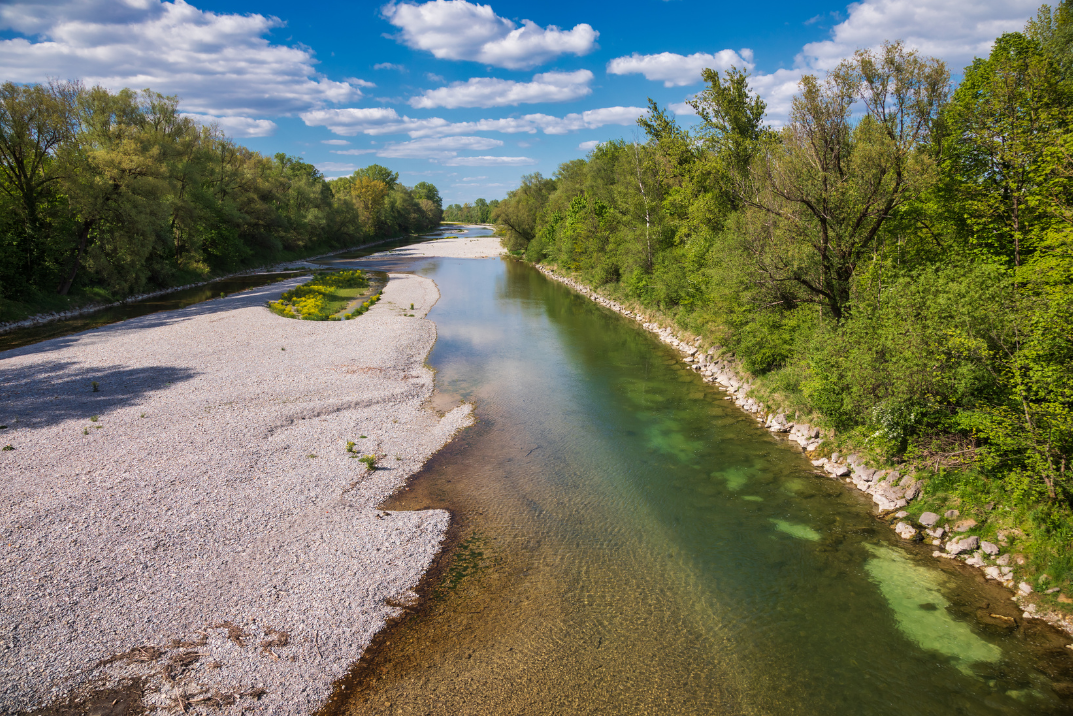AWI Research Entities

GWSC
The Global Water Security Center leverages cutting-edge science to deliver critical water and environmental security insights to key decision-makers and provides reliable tools and analysis to support national water security interests.

CIROH
CIROH is a one-of-a-kind partnership between The University of Alabama, NOAA and the National Weather Service, aimed at revolutionizing U.S. water forecasting through collaboration among 28 institutions.

CONSERVE
CONSERVE draws on The University of Alabama’s wide-ranging interdisciplinary expertise to address biodiversity and watershed management challenges through community-centered research.
Research News
-
New EPA-Funded Project to Strengthen Gulf Coast Water Monitoring

A new three-year initiative will track PFAS contamination in coastal waters across Alabama and Mississippi, producing the first published data on these persistent chemicals in Gulf Coast waters for the region.
-
CIROH Builds on AGU24 Momentum as It Prepares for AGU25: Advancing Water Prediction and Connection Through Science

CIROH is building on the momentum of AGU24 as it prepares for AGU25 in New Orleans, where leaders in Earth and space science will gather under the theme “Where Science Connects Us.” From advancing water prediction and community modeling to training the next generation of scientists, CIROH will highlight innovations that strengthen resilience and support…
-
New Equipment Strengthens UA Water Research Across Disciplines

From the lab to the field, new tools funded by the Alabama Water Institute are empowering UA researchers to solve Alabama’s most pressing water challenges.
-
New Satellite-Derived River Slope Database Helps Improves U.S. Flood Forecasts

CIROH researchers have harnessed NASA’s satellite data to sharpen a critical piece of flood forecasting: river slope. Their new datasets improve U.S. flood models by more than 30%, giving emergency managers faster, more reliable information to protect communities during extreme weather.
WaterWorks

The Alabama Water Institute’s Annual Report highlights a year of progress in advancing water science, technology and policy. From tackling pressing challenges like floods and droughts to fostering innovation through our flagship research entities — GWSC, CIROH and CONSERVE — we continue building a nationally recognized research enterprise. Explore how our work, in partnership with NOAA, USGS and others, is translating science into solutions that benefit communities in Alabama and beyond.
AWI’s Impact
$34M Total FY24 Extramural Funds
$520K Research Support Provided
46 Employees
34 New Research Projects
159 Affiliated Papers Published
696 Research Presentations
23 Students attending the Summer Institute
11 Students joining NRT
9 Students in First REU
224K Social Media Impressions
26K Social Media Engagements